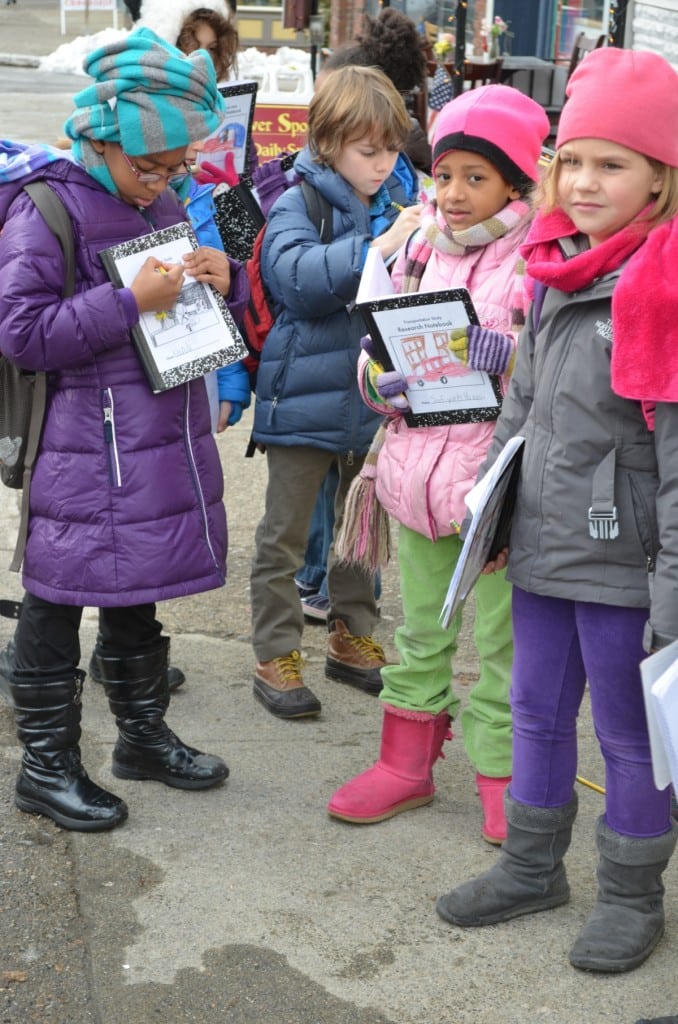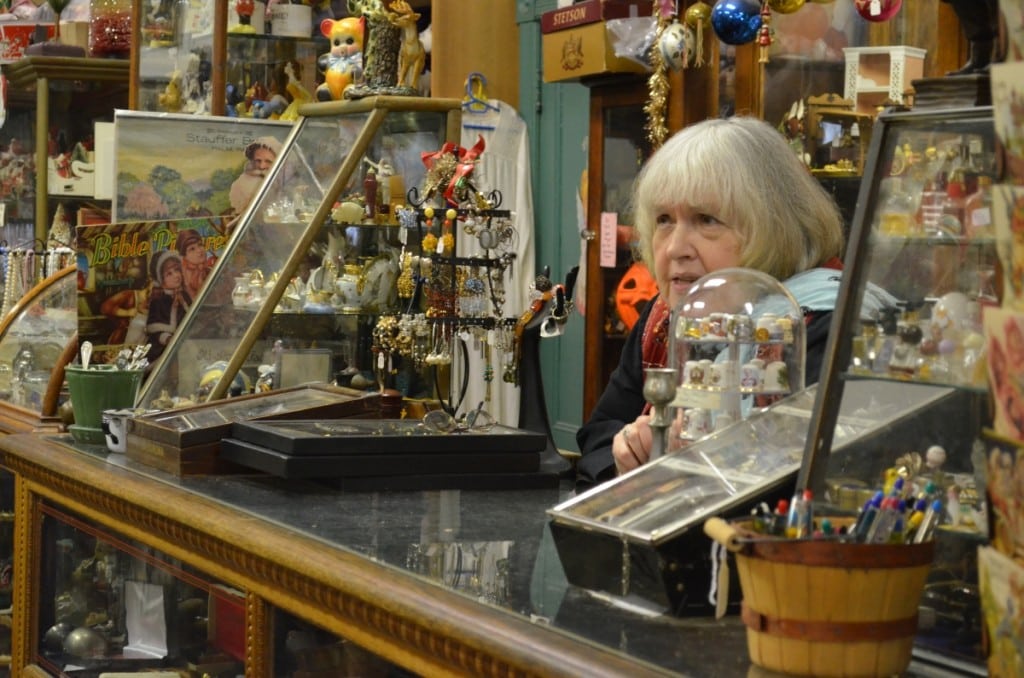Fifty children take train to visit Main Street establishments
Cold Spring has gone from rural to suburban in the course of five years. Most residents would question both of these categorizations and go with the tried-and-true “village on the Hudson” description instead, but that isn’t one of the three options in the second-grade curriculum unit on transportation used at the Community Roots School in Brooklyn. This unit is what draws about 50 children from that school each year around this time on an excursion to Cold Spring, as they explore the differences between urban, suburban and rural lifestyles and the transportation necessitated by each lifestyle.

This year’s visit took place on a typical winter day, Jan. 17: not too cold, but no one would call it warm either. The children were divided into three groups and accompanied by teachers, including the coordinating teacher Daina Ankrum, and parent chaperones. They took a Metro-North train up from Grand Central and proceeded to make a multi-stop tour of Main Street, visiting five local businesses: Carolyn’s Flower Shoppe, Cold Spring Pizza, The Country Goose, Cup-o-ccino Café, and, just to prove that not all establishments in Cold Spring begin with the letter “c,” Once Upon a Time Antiques.
Ankrum has helped organize this program for the past five years. In keeping with their classroom studies, comparing the ways people live in and around cities and how transportation factors into that, the classes compare three different locales, Myrtle Avenue, Brooklyn, near the school, classified as urban; Cold Spring, which originally was called rural but has been reclassified as suburban; and a farm in Goshen, for a true rural experience.
Ankrum found Cold Spring while scouting for an appropriate community when the field trip was initially planned. The criterion then was basically that the main area of the location had to be accessible via public transportation of some kind. Few would now think of present-day Cold Spring as rural — the factoring in of commuting to the city was the primary reason the village is now considered suburban for their purposes.
Those on Main Street that day could not fail to notice the multiple groups of bundled-up children walking spiritedly up the hill to the heart of the village. On different schedules, the groups began their village rounds.
While one group got first dibs on the pizza, the group led by Ankrum called in first to Once Upon a Time Antiques, where Barbara Wade, behind the counter, answered a series of pre-planned questions from the children.

To the basic “What kinds of transportation do you use to get to work?” Wade gave a very Putnam County-esque answer: “I use a car; I come up the highway and look at all the trees and landscapes. I enjoy the changing colors. I drive through Fahnestock Park where in summer I see people boating, and in winter, if it’s cold enough, I see ice fishing.”
Asked to name three types of transportation used in our area, Wade replied, “Cars, the Metro-North trains and I wish I could say horses, but I can’t — oh, but once in a while I see roller-skaters going down the bike trail.” Ankrum clarified for the children that the trains Wade was referring to were not the subways, which they mean when they say train.
Asked if she enjoyed living here, Wade said she did, however her Brooklyn roots came out when she admitted to missing that “everything was right under my nose there. And I miss the hot dogs in the street.”
After finishing up there, the group assembled at a spot on Main Street where they had a good vantage point of the “traffic.” Using forms, the children made notations of how many cars, trucks, vans and pedestrians they saw within a specific time period. They had made some pre-visit predictions for comparison purposes. The same activity will take place at similar times in the urban and rural settings so the children can compare the results and link them to their overall understanding of the differences.

Though stomachs were rumbling for pizza, the other pizza-eaters had not finished, so this group headed across to Fair Street to do some “side-street sketching,” choosing a view that included a peek at the river and mountains through several of the picturesque older homes on that street. After lunch, visits to the other establishments followed. A copy of the Philipstown.info/The Paper’s map of this area was provided to each child to help trace the route.
Leonora Burton of the Country Goose eagerly awaits the children’s visits each year. She enjoys answering their questions and keeps the many thank-you cards she receives from them post-visit. She said that quite a few children return to the village with their parents later on in the year, the parents’ interest being piqued by the children’s descriptions. A look through the handmade cards from last year gave clues to the children’s response to the village and its businesses:
“You were so nice. You took time off your job. Your answers were fantastic! You helped us with our research.”
“Thank you for the bag with stuff in it. You have to work hard. I really liked your store.”
And, reflecting the sentiment that has caused many grown-ups to move from the city to Cold Spring:
“I like Cold Spring. Maybe I’ll live there someday.”











Great story, Alison. You captured the spirit of the kids adventure beautifully. Thank you.